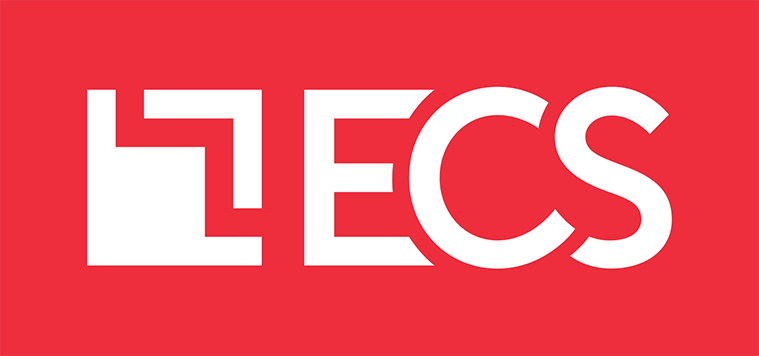
No matter the size of your organization, the future of your cybersecurity program hinges on how you address continuous improvement and emerging threats. If your cyber teams are not adhering to best practices or are not in tune with your organization’s overarching strategy, you could be vulnerable to devastating cyber threats.
This is where cybersecurity strategies, frameworks, and required authoritative sources come into play. Knowing your organization’s posture against your selected framework and authoritative sources is key to maintaining a cybersecurity program that can last. The more mature your cybersecurity practices and controls are, the better equipped your organization will be to identify and stop threats before they become breaches.
Learn how to understand your organization’s cyber posture, grow your cyber maturity, and protect your cybersecurity future — and how ECS can help at a fraction of the time and resource cost.
Cybersecurity is a Business Problem to Solve
Information technology is only valuable insofar as it supports the mission, vision, and goals of your organization. Cybersecurity supports this value by protecting the confidentiality, integrity, and availability of your organization’s assets. Thus, cybersecurity is ultimately a business problem to solve.
Understanding your industry and the type of information you must protect is the foundation upon which your risk appetite is determined and risk-based decisions are made. Additionally, understanding your organization’s strategic objectives determines the level of controls needed to protect your assets.

For your cybersecurity program to support your organization’s strategic objectives and reequipments, leverage authoritative sources (e.g., regulations, laws, frameworks, contractual obligations) to set expectations and align your program with those objectives. Without clear policies, standards, and procedures, members of your IT and cybersecurity teams will lack the input they need to make informed decisions.
Cyber Maturity vs. Cyber Hygiene
It’s worth taking the time to distinguish between cyber maturity and cyber hygiene. The latter refers to daily cyber-related functions that keep your network “clean.” Ideally, good cyber hygiene is woven into the day-to-day workflow of your security personnel. Maturity, in contrast, deals with capabilities and strategic approaches: the long-term investments in people, processes and technology that position your cybersecurity program’s future in the face of an ever-evolving threat landscape.
Familiarize yourself with various cybersecurity frameworks that can help guide you in building your cybersecurity program, such as the National Institute of Standards and Technology Cybersecurity Framework (NIST CSF), International Organization for Standardization (ISO 27001), and Control Objectives for Information and Related Technologies (COBIT). Couple these foundational frameworks with a selected maturity model, such as the Cybersecurity Maturity Model Certification (CMMC) program, Cybersecurity Capability Maturity Model (C2M2), or CERT Resilience Management Model (CERT-RMM). By utilizing cybersecurity frameworks and maturity models, you can assess your organization’s maturity level.
Five Foundational Areas for Cyber Maturity:
Processes
Insufficient policies, standards, and procedures will hinder your ability to conduct daily functions and maintain compliance.
Best Practices and Solutions: Create a written information security program that establishes how your program is governed, as well as policies, standards, and procedures that provide clearly defined expectations and spell out how functions should be achieved.
Awareness
Lacking awareness can take many forms — inaccurate pictures of assets, end users lacking insight into the threats facing their networks, etc. — but the result is an increase in your organization’s attack surface and a reduced ability to see attacks coming.
Best Practices and Solutions: Improving your cyber awareness comes down to two concepts: getting every level of your organization to adhere to an established behavioral baseline and properly managing your data (e.g., reconciling conflicting data or removing target data from storage media).
Access Control
Poor or nonexistent access and identity management multiplies your risk factor as the number of unsecured endpoints rises.
Best Practices and Solutions: Knowing who and what is authorized to have access to your corporate resources is foundational for any cybersecurity program. Zero-trust security models are quickly growing in relevance and adoption. Other best practices include strictly limiting access to critical systems and data (and de-provisioning when required) and instituting multifactor authentication for network access.
Monitoring, Detection, and Response
Proper threat monitoring and response demand dynamic, customizable, and proactive solutions in today’s environment.
Best Practices and Solutions: In-house network monitoring and incident response can be expensive, and burnout among cyber analysts is common. A managed security solutions provider can deliver the dynamic capabilities you need to protect your organization — SIEM, NGAV, EDR, etc. — while saving you time and resources.
Recovery and Continuity of Operations
Lacking a disaster recovery plan (DRP) ensures your organization struggles to recover from the disruption and strain of a breach.
Best Practices and Solutions: No organization is immune to disaster, but a DRP and various disaster recovery solutions can help ensure your organization always has a quick path towards remediation.

Protecting Your Cybersecurity Future with ECS
ECS’ cyber professionals have the experience and the technical expertise to assess your organization’s cyber maturity level, help grow that maturity, and protect your cyber future.
Ready to mature your cyber operation and reduce the risks facing your organization?





